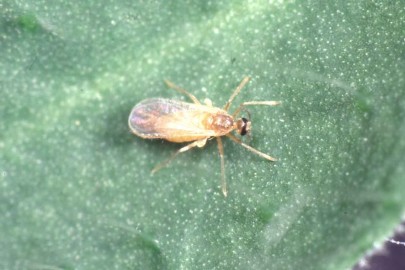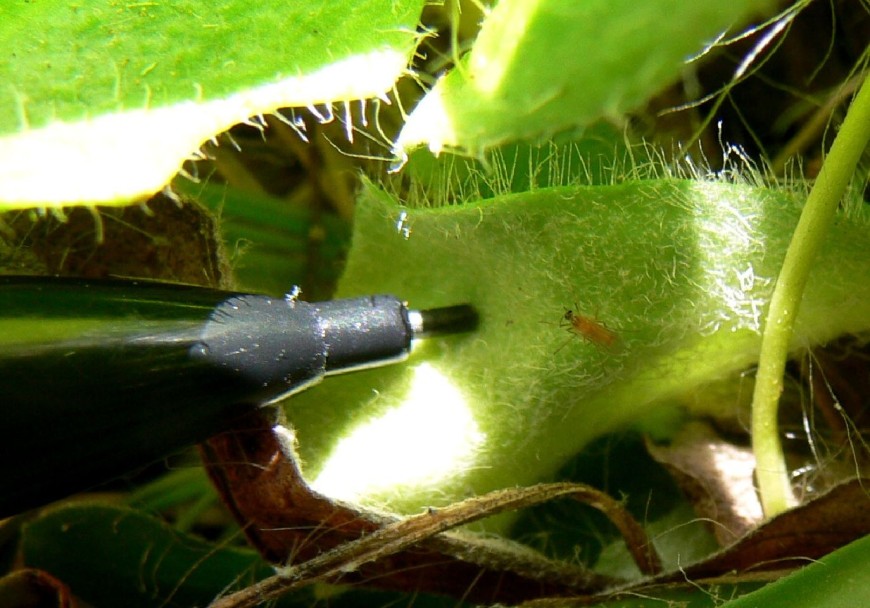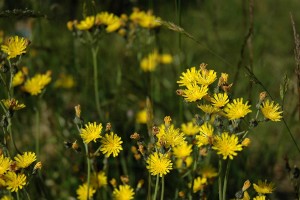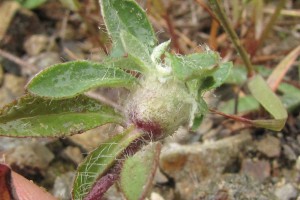Hieracium gall midge
History in New Zealand
Hieracium gall midges are native to northern Europe. Several shipments of the midges were imported from Switzerland by Manaaki Whenua - Landcare Research, in conjunction with the Hieracium Control Trust, in the late 1990s for testing.
Permission to release the gall midges was granted by ERMA in 2000 and another shipment imported in 2001 to begin a rearing colony. The first field releases were made in 2002 and widespread releases were undertaken in subsequent years. The gall midges have now established at many sites in both the North Island and South Island, and while establishment rates have been high slow dispersal means that they are not yet widespread.
How would I find/recognise it and what is its lifecycle?
You will not be able to easily differentiate the adult gall midges in the field from other small- winged insects. The adults are tiny (<2 mm long) fragile orange flies with poorly developed heads. They are short-lived (2-13 days).

Image: hieracium gall midge (Macrolabis pilosellae).
The females usually lay their eggs in the centre of rosettes, in stolon tips, and leaf axils, but sometimes in the flowerheads too. The resulting larvae cause galls to form as they feed and develop, which causes the leaves in these areas to curl. Swollen plant deformities and curled leaves are the most obvious sign that the gall midge is present. Two or three generations are produced each year during the warmer months.
Image: hieracium gall midge damage.
Image: hieracium gall midge leaf and flower galling.
The hieracium gall wasp (Aulacidea subterminalis) (see Hieracium gall wasp) also galls the stolon tips, but these galls are quite different, being firm to the touch and most often occurring as clusters of distinct peppercorn-sized chambers. Gall midge galls are much softer and associated with curled leaves.
How does it damage hawkweeds?
Gall formation and development reduces the amount of nutrients available for normal plant growth so affected plants are stunted and are likely to produce fewer flowers and stolons.
Image: hieracium gall midge damage.
Image: hieracium gall midge damage.
Will it attack other plants?
No, it is extremely unlikely that hieracium gall midges will attack plants other than mouse-ear hawkweed (Pilosella officinarum), king devil hawkweed (P. praealta) and field hawkeed (P. caespitosa).
How effective is it?
A recent study in the North Island showed that midges gall up to 33% of plants and reduced hieracium cover by 18%. In the South Island midges only galled 10% of plants and no reduction in cover has been recorded to date.
How can I get the most out of it?
While midges are widely established their distribution is still limited due to slow dispersal rates. As soon as they are present in harvestable numbers it would be worth helping to establish them in all areas where they are needed.
How do I select a release site?
Read Guidelines for selecting release sites for biocontrol agents.
How do I collect it for release at other sites?
Dig up at least 20 plants with fresh new galls on them in late spring. Leave as much soil on the roots and around the plant as possible, to minimise harming the plants and allow pupae to be shifted as well. Transplant these plants in uninfested areas and water as often as required for the plants to become re-established. The midges will be able to complete development and emerge to attack plants at the new site.
How do I manage the release sites?
Avoid activities that will interfere with the midge's life cycle. Avoid herbicides if possible.




